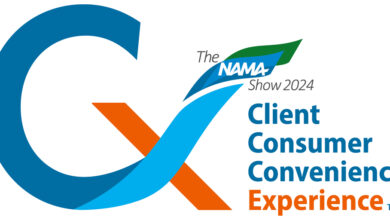Europe and Latin America Gamification Market (2022 – 2027) Expected to Register a CAGR of 24.5% – ResearchAndMarkets.com

DUBLIN–(BUSINESS WIRE)–The “Europe and Latin America Gamification Market – Growth, Trends, COVID-19 Impact, and Forecasts (2022 – 2027)” report has been added to ResearchAndMarkets.com’s offering.
Europe and Latin America Gamification Market are expected to register a CAGR of 24.5% during the forecast period 2021 to 2026.
The exponential growth in the number of smartphones and mobile devices in the region has boosted the demand for the gamification market. This growth is also supported by the increasing recognition of gamification systems as a method to architecture human behavior in order to induce innovation, productivity, or engagement.
Key Highlights
Improved learning outcomes are anticipated to increase the demand for gamification among various end-users in the European and Latin American countries. Gamification, as a promising learning method, is a growing trend in manufacturing, education, healthcare training, etc.
For instance, at the Delft University of Technology in the Netherlands, instructors gamified two courses, a first-year undergraduate course on computer organisation and a master’s level course on cloud computing. Also, Smart Game Systems (SGS) were tasked with improving the decision-making capability of healthcare professionals at a UK university by using pesticides to combat spread of malaria.
According to NTL Institute of Applied Behavioral Science Learning Pyramid model the traditional learning methods based on listening, reading, and observing are getting ineffective, and only 20% to 30% of contents might be recalled by the person. The advancement in technology based on simulation learning is effectively driving the growth of the market, with a high percentage of learning outcomes.
MicroPower has created a number of gamified solutions for companies in Brazil, with the main objective of the gamified solutions being to better engage employees who need to learn key information about the products they are selling. This is because the country has 40% of its workforce in Generation Y, and these young folks learn and perform differently. They want to compete, be recognized, and rewarded.
The recent COVID 19 outbreak will boost the adoption of gamification across various end-user industries in the region. The government agencies are using gamification techniques to spread awareness about the pandemic while educational institutes are using it to keep their students engaged and monitor their progress.
Key Market Trends
Smartphones Adoption to Drive the Market Growth
Europe commands a significant penetration rate of smartphones and mobile subscriptions, which is influencing the demand for gaming solutions. According to Ericsson, during Q3 2019, the smartphone subscriptions in Western Europe, and Central and Eastern Europe stood at 390 million and 350 million respectively; these numbers are expected to reach 490 million and 500 million by 2025 with the advent of 5G.
Increasing penetration of smartphones and mobile gaming is further augmenting the demand for gamified solutions in various industries. In healthcare, Sea Hero Quest, a mobile game, is used to collect data for the detection of dementia at an early stage.
A high level of smartphone penetration in the European region is one of the key reasons for the faster adoption of gamification. According to the GSM Association Mobile Economy Europe Report 2018, the number of unique mobile subscribers is set to grow from 465 million in 2017 to 481 million in 2025. At this number, the penetration rate will be 88% of the total population.
Gaming for Engagement in key End-User Segments to have Significant Growth
The application of games in the end-user industries for purposes, such as education, training, problem recognition, enhanced problem-solving capabilities, social skills, and improving collaborative abilities, along with decision making, may drive the market during the forecast period.
Healthcare applications of gamification in the region are increasing significantly, and healthcare professionals are incorporating the technology as part of their treatment process to keep patients engaged and help them recover faster with better cognitive skills. For instance, Xploro is a health information platform that uses augmented reality and games, along with AI, for reducing stress and anxiety about medical procedures.
British Armed Forces are using VR training platform, featuring gaming technology. The UK Ministry of Defence’s (MoD) VR simulator platform is built on Fortnite gaming engine, and it is expected to become a part of the wider training program for the forces over the coming years. Such developments in the region are expected to increase over the coming years.
High expenditure on advertising is witnessed across industries in the region, as advertisers use gamification to optimize brand awareness, target more audiences, and make additional traffic to their websites.
Companies Mentioned
- Young Targets GmbH
- Growth Engineering Ltd.
- Gamifier, Inc.
- 3radical Limited
- CUT-E GMBH (AON, PLC)
- Gamehill
- MMD Games
- BrandNewGame
- Mindonsite SA
- Bluerabbit Edu, S.A.P.I. de C.V.
- Matifac
- Senac Brasil
For more information about this report visit https://www.researchandmarkets.com/r/p9v4dq
Contacts
ResearchAndMarkets.com
Laura Wood, Senior Press Manager
[email protected]
For E.S.T Office Hours Call 1-917-300-0470
For U.S./CAN Toll Free Call 1-800-526-8630
For GMT Office Hours Call +353-1-416-8900





